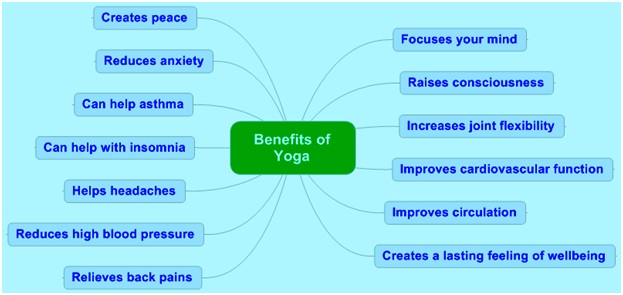There are many things parents can do to help children with autism overcome their challenges. But it’s also important to make sure you get the support you need. When you’re looking after a child with autism, taking care of yourself is not an act of selfishness—it’s a necessity. Being emotionally strong allows you to be the best parent you can be to your child in need. These parenting tips can help by making life with an autistic child easier.
Helping children with autism tip 1: Provide structure and safety
Learning all you can about autism and getting involved in treatment will go a long way toward helping your child. Additionally, the following tips will make daily home life easier for both you and your autistic child:
Be consistent. Children with autism have a hard time adapting what they’ve learned in one setting (such as the therapist’s office or school) to others, including the home. For example, your child may use sign language at school to communicate, but never think to do so at home. Creating consistency in your child’s environment is the best way to reinforce learning. Find out what your child’s therapists are doing and continue their techniques at home. Explore the possibility of having therapy take place in more than one place in order to encourage your child to transfer what he or she has learned from one environment to another. It’s also important to be consistent in the way you interact with your child and deal with challenging behaviors.
Stick to a schedule. Children with autism tend to do best when they have a highly-structured schedule or routine. Again, this goes back to the consistency they both need and crave. Set up a schedule for your child, with regular times for meals, therapy, school, and bedtime. Try to keep disruptions to this routine to a minimum. If there is an unavoidable schedule change, prepare your child for it in advance.
Reward good behavior. Positive reinforcement can go a long way with children with autism, so make an effort to “catch them doing something good.” Praise them when they act appropriately or learn a new skill, being very specific about what behavior they’re being praised for. Also look for other ways to reward them for good behavior, such as giving them a sticker or letting them play with a favorite toy.
Create a home safety zone. Carve out a private space in your home where your child can relax, feel secure, and be safe. This will involve organizing and setting boundaries in ways your child can understand. Visual cues can be helpful (colored tape marking areas that are off limits, labeling items in the house with pictures). You may also need to safety proof the house, particularly if your child is prone to tantrums or other self-injurious behaviors.
Helping children with autism tip 2: Find nonverbal ways to connect
Connecting with a child with autism can be challenging, but you don’t need to talk in order to communicate and bond. You communicate by the way you look at your child, the way you touch him or her, and by the tone of your voice and your body language. Your child is also communicating with you, even if he or she never speaks. You just need to learn the language.
Look for nonverbal cues. If you are observant and aware, you can learn to pick up on the nonverbal cues that children with autism use to communicate. Pay attention to the kinds of sounds they make, their facial expressions, and the gestures they use when they’re tired, hungry, or want something.
Figure out the need behind the tantrum. It’s only natural to feel upset when you are misunderstood or ignored, and it’s no different for children with autism. When children with autism act out, it’s often because you’re not picking up on their nonverbal cues. Throwing a tantrum is their way of communicating their frustration and getting your attention.
Make time for fun. A child coping with autism is still a kid. For both children with autism and their parents, there needs to be more to life than therapy. Schedule playtime when your child is most alert and awake. Figure out ways to have fun together by thinking about the things that make your child smile, laugh, and come out of their shell. Your child is likely to enjoy these activities most if they don’t seem therapeutic or educational. There are tremendous benefits that result from your enjoyment of your child’s company and from your child’s enjoyment of spending unpressured time with you. Play is an essential part of learning and shouldn’t feel like work.
Pay attention to your child’s sensory sensitivities. Many children with autism are hypersensitive to light, sound, touch, taste, and smell. Other children with autism are “under-sensitive” to sensory stimuli. Figure out what sights, sounds, smells, movements, and tactile sensations trigger your kid’s “bad” or disruptive behaviors and what elicits a positive response. What does your autistic child find stressful? Calming? Uncomfortable? Enjoyable? If you understand what affects your child, you’ll be better at troubleshooting problems, preventing situations that cause difficulties, and creating successful experiences.
Helping children with autism tip 3: Create a personalized autism treatment plan
A good autism treatment plan will:
- Build on your child’s interests
- Offer a predictable schedule
- Teach tasks as a series of simple steps
- Actively engage your child’s attention in highly structured activities
- Provide regular reinforcement of behavior
- Involve the parents
Source: National Institute of Mental Health
With so many different autism treatments available, and it can be tough to figure out which approach is right for your child. Making things more complicated, you may hear different or even conflicting recommendations from parents and doctors. When putting together an autism treatment plan for your child, keep in mind that there is no single treatment that will work for everyone. Each person on the autism spectrum is unique, with different strengths and weaknesses.
Your child’s treatment should be tailored according to his or her individual needs. You know your child best, so it’s up to you to make sure those needs are being met. You can do that by asking yourself the following questions:
- What are my child’s strengths?
- What are my child’s weaknesses?
- What behaviors are causing the most problems?
- What important skills is my child lacking?
- How does my child learn best (through seeing, listening, or doing)?
- What does my child enjoy and how can those activities be used in treatment?
Finally, keep in mind that no matter what autism treatment plan is chosen, your involvement is vital to success. You can help your child get the most out of treatment by working hand-in-hand with the autism treatment team and following through with the therapy at home.
From:http://www.helpguide.org/articles/autism/helping-children-with-autism.htm




